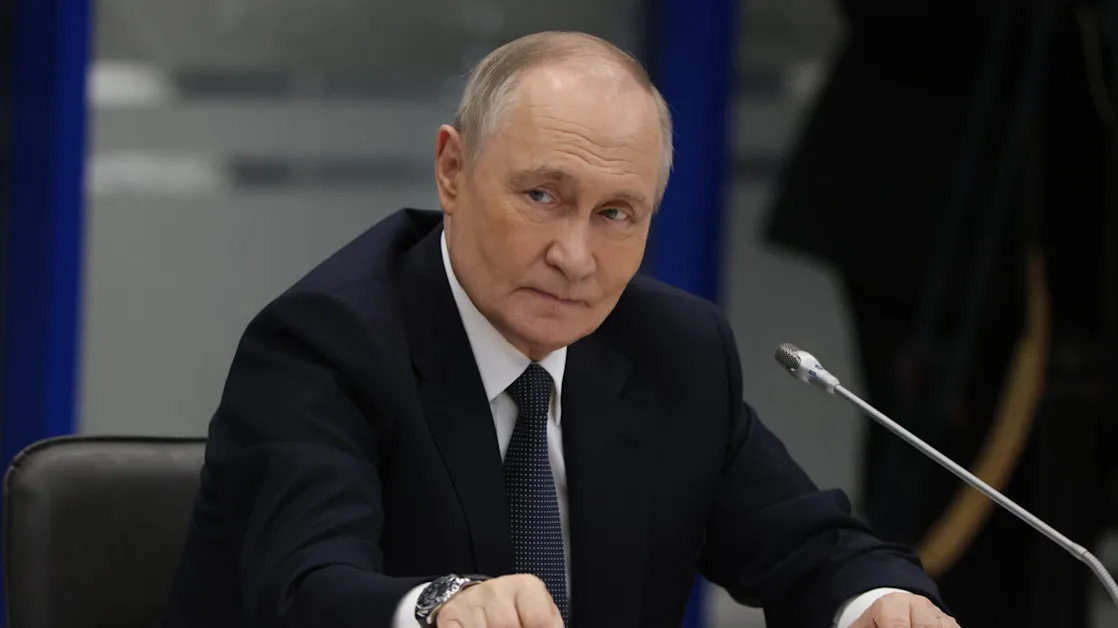Russia’s economy faced a sharp slowdown in February, stoking fear in the country just as a brewing global trade war is expected to hit prices for its oil and gas exports.
The Kremlin’s Economic Development Ministry (EDM) reported that GDP grew by 0.8% in February compared with the year prior, a steep reduction from growth of 3% in January and the slowest recorded growth since March 2023, Interfax reported last week. The figures were confirmed by Reuters on Tuesday following an official statistics release.
Industrial output rose by just 0.2% against 2.2% growth in January, while retail sales rose by 2.2% against 5.2% the month prior.
Upon release of the statistics last week, the EDM blamed the sharp slowdown on a calendar-based anomaly: February 2024 marked a leap year.
“The one additional working day could be reflected in the statistics by a fluctuation of several percentage points. If this factor were excluded, the economic growth rate in February would be comparable to that in January,” the ministry said.
However, this viewpoint has been challenged by economists, who see other issues weighing down Russian finances.
“The softening of growth figures demonstrates monetary tightening, sanctions, supply-side constraints, and higher price pressures remain restrictive,” said Volkan Sezgin, a senior EMEA economist at Continuum Economics.
Raiffeisenbank had a similar reading on the figures, writing in a research note reported by Reuters: “The deterioration in a significant part of the industrial sectors is becoming persistent. Signs of a slowdown are taking hold.”
Russia’s economy is flashing red across several indicators. Labor shortages have helped drive wage increases, leading inflation to rise above 10%. The country’s labor force has been constrained by military call-ups, combined with demographic challenges caused by low birth rates.
In response, the Russian central bank has hiked interest rates to 21% in a bid to slow down price rises. The central bank indicated in March that the economy was beginning to show signs of cooling as it continues battling to bring inflation below 10%.
A deteriorating global economic context, though, means Russia is at risk of seeing its economy cool down more than policymakers would like.
Russia was excluded from Trump’s theatrical April 2 “Liberation Day” unveiling of tariffs targeting the U.S.’s friends and foes, with the White House explaining that existing sanctions already “preclude any meaningful trade” from taking place between the two nations.
The downstream effects of those tariffs, though, have hit one of Russia’s key exports.
Oil prices fell to a four-year low on Wednesday, below $60 a barrel, in the wake of fresh tariffs by the Trump administration on China, with investors projecting falling demand and shipments as the world trading order goes into flux.
Russia generates around 30% of revenue for its state budget from oil and gas sales. Despite sanctions, oil and gas revenues have continued to grow, hitting $108 billion last year.
The Kremlin budgeted for an average barrel price of $70 when drawing up its 2025 budget, of which around a third was devoted to military spending. There is an acknowledgment among policymakers that any drop in oil prices could have grave consequences for Russia’s economy.
“If such tariff wars, and we are seeing an escalation of tariff wars, continue, it usually leads to a decline in global trade, the global economy, and possibly even the demand for our energy resources,” Elvira Nabiullina, the governor of Russia’s central bank, said, according to Reuters reporting via TASS.
Were a ceasefire with Ukraine to be agreed to, Continuum Economics projects a sharp slowdown in Russian GDP growth, owing to a resultant reduction in defense spending.


